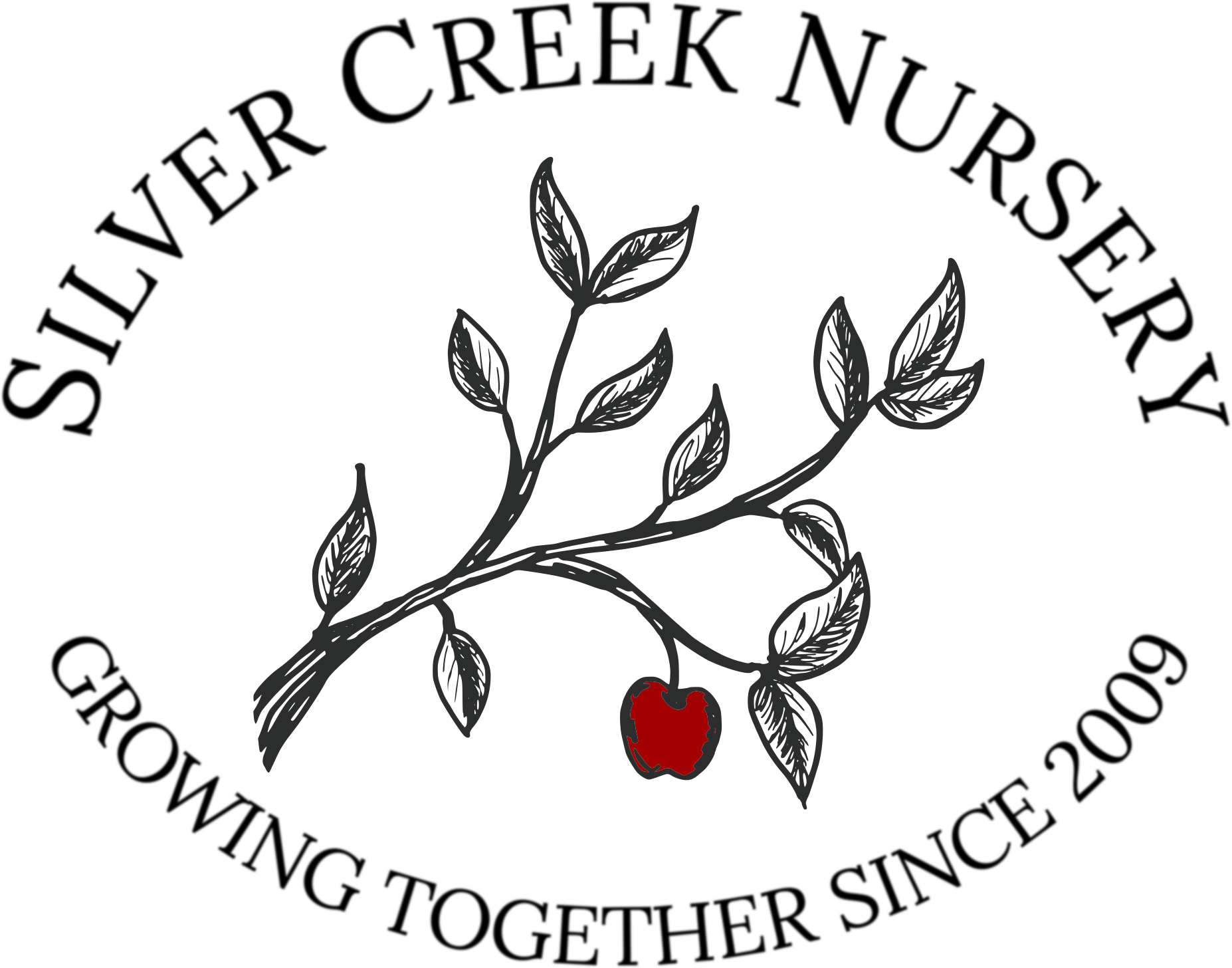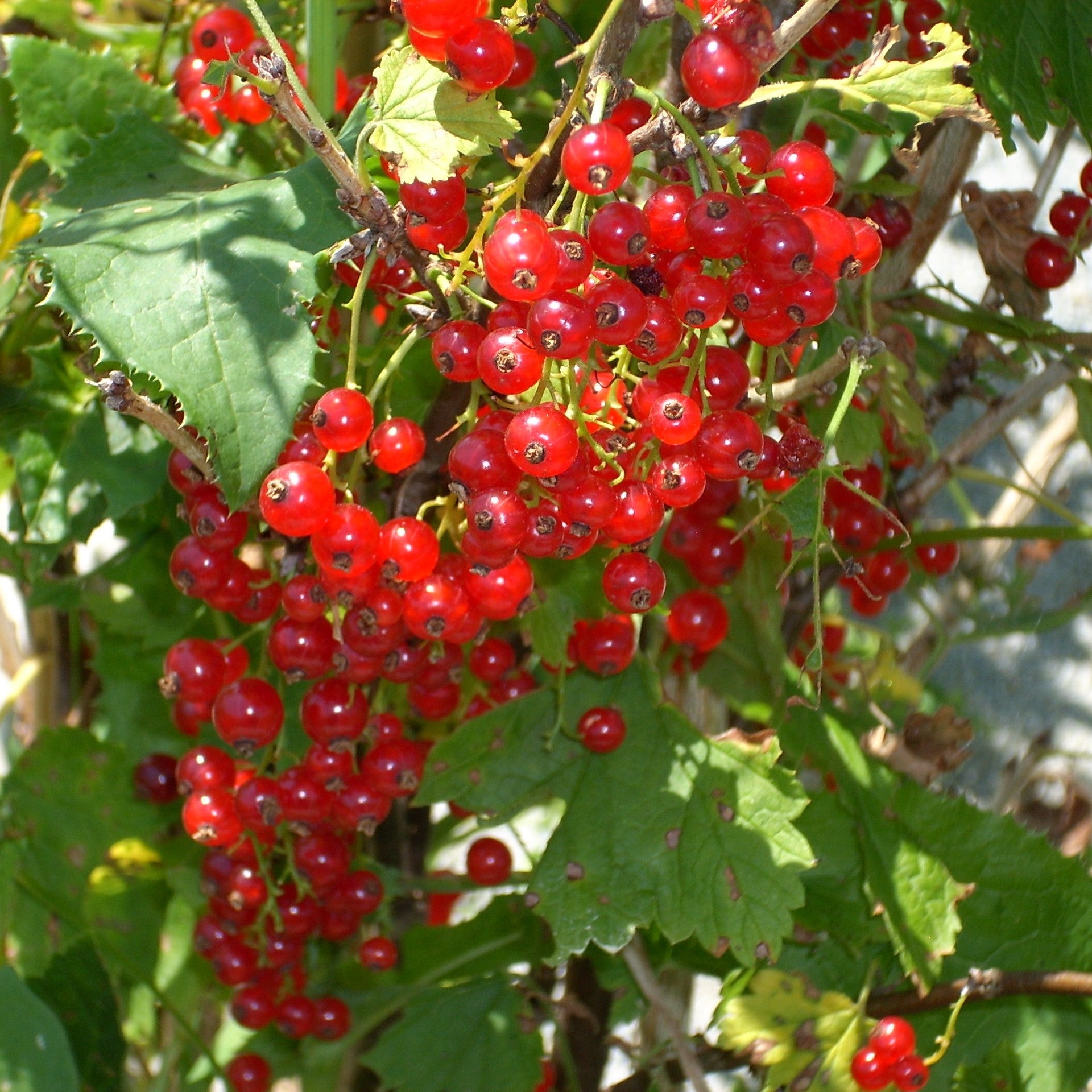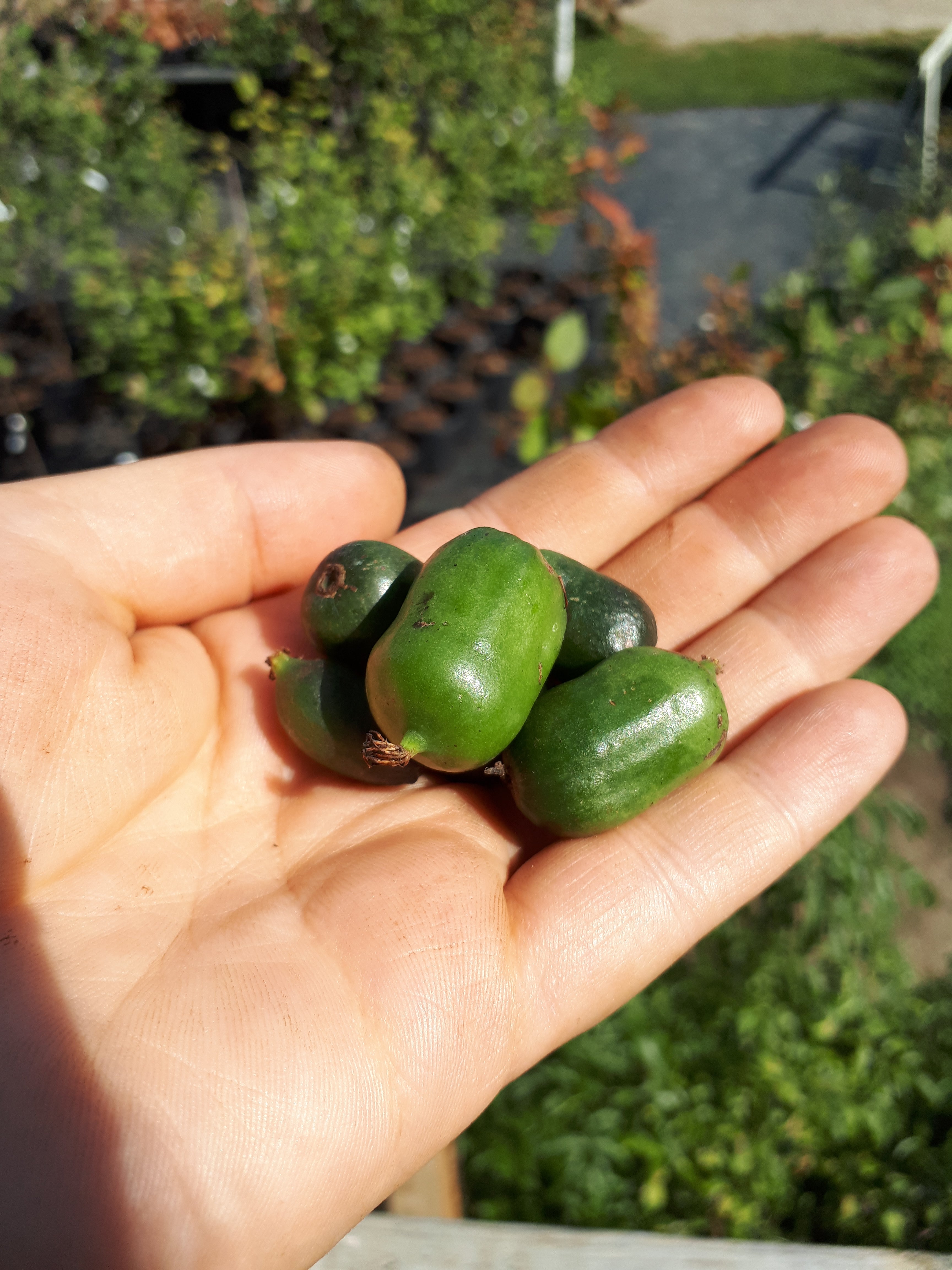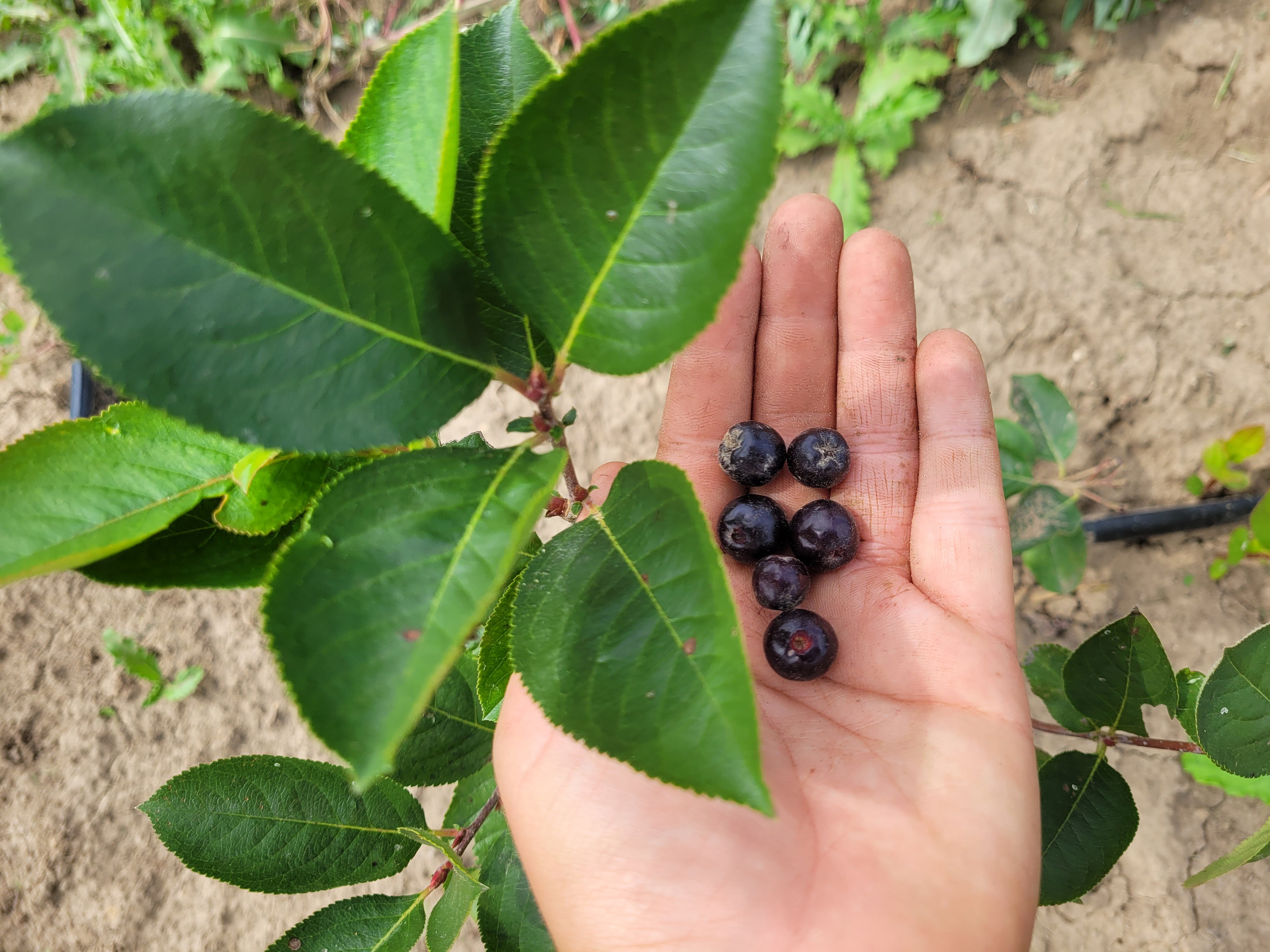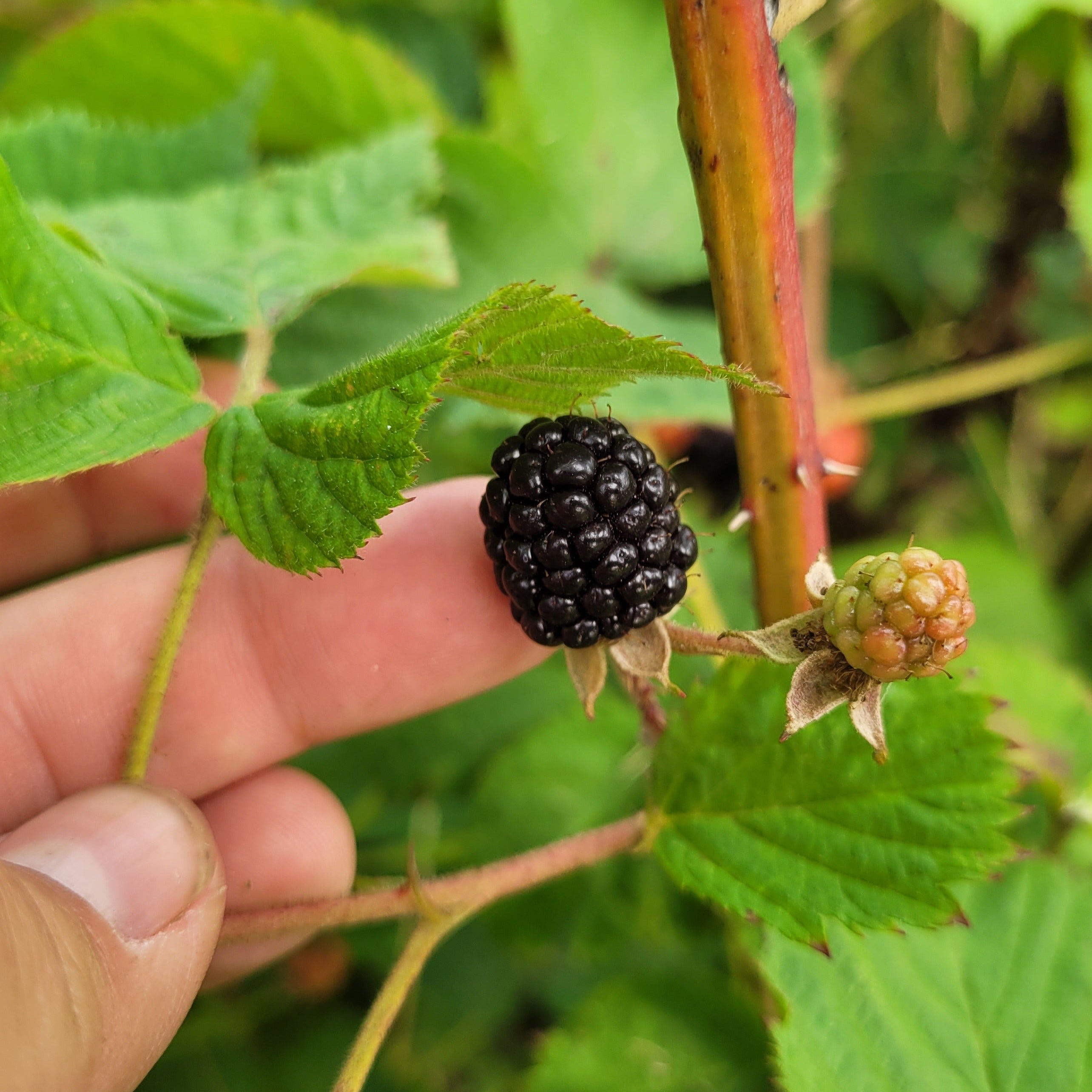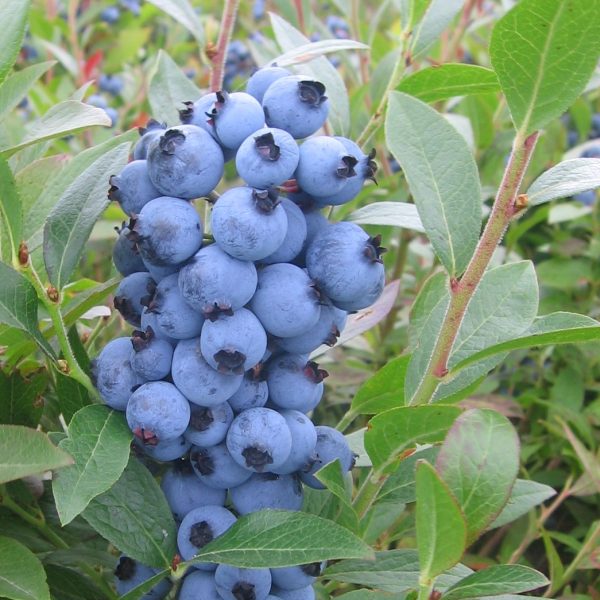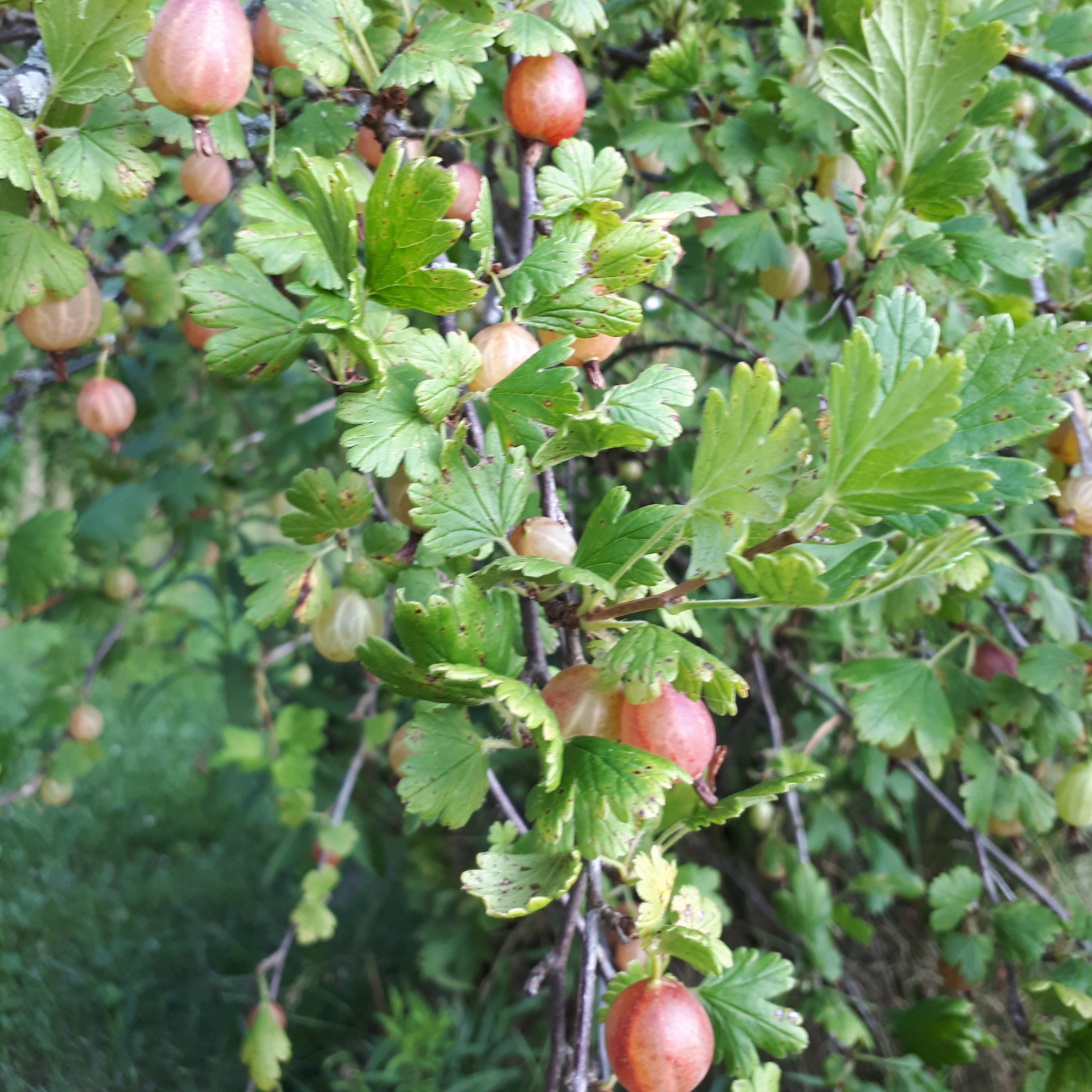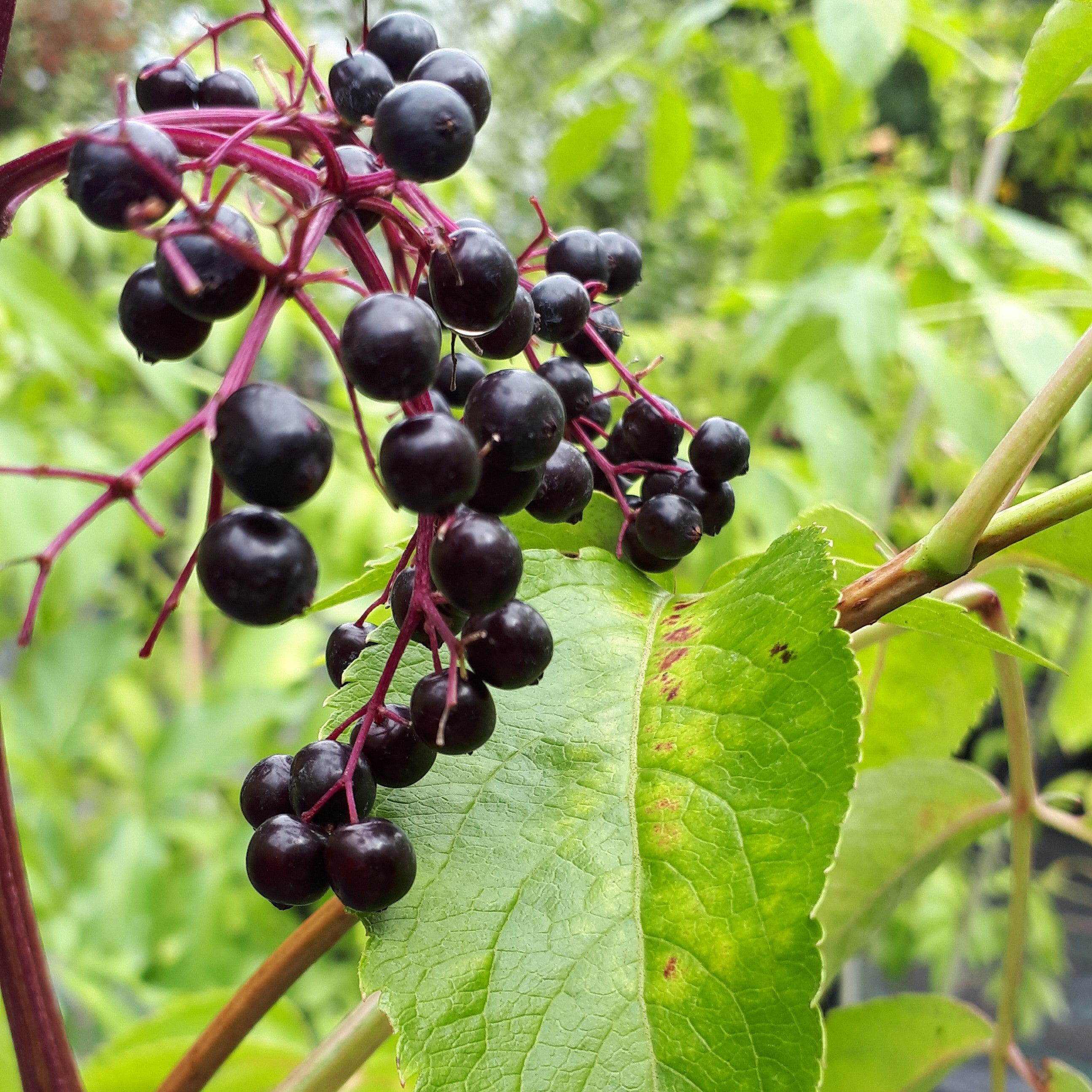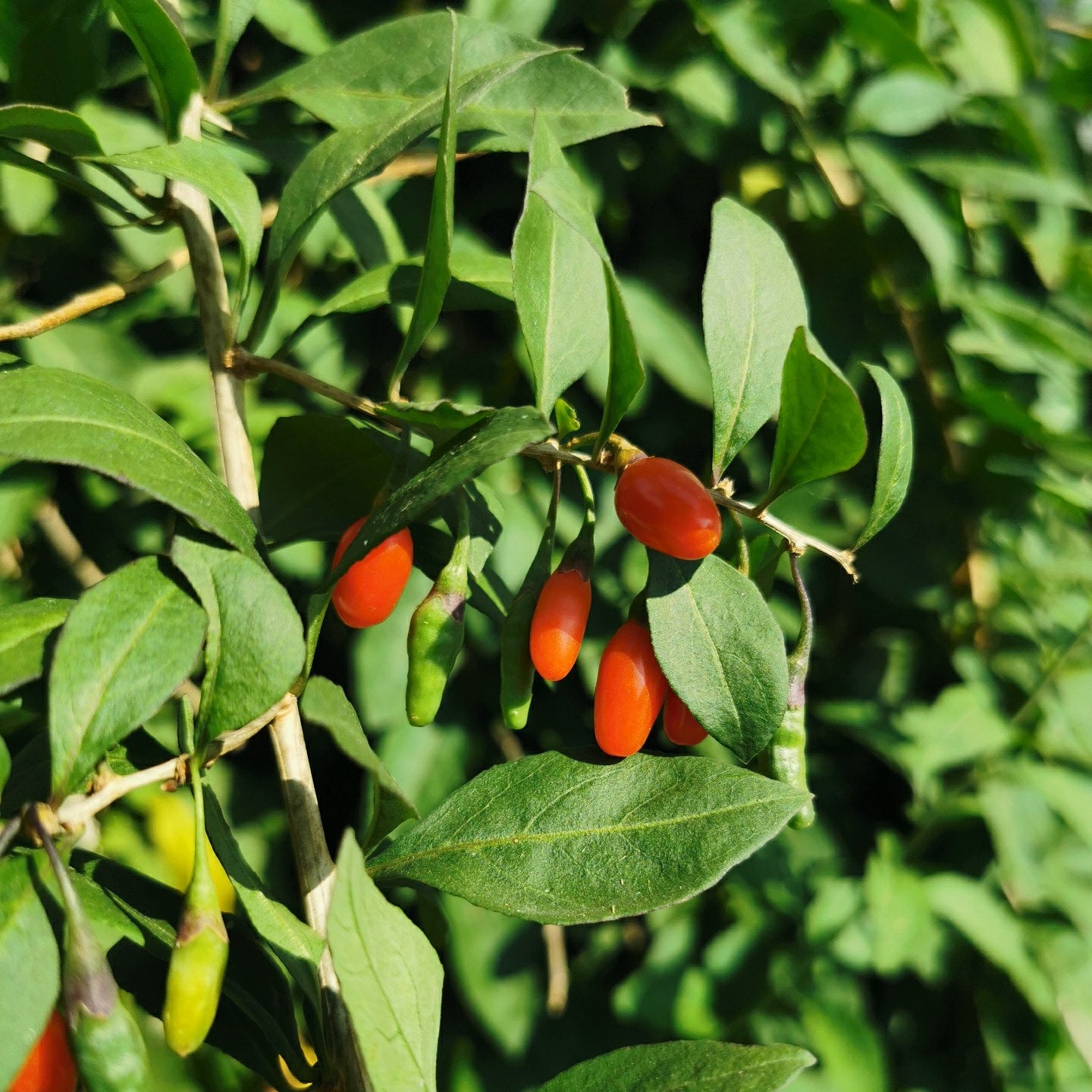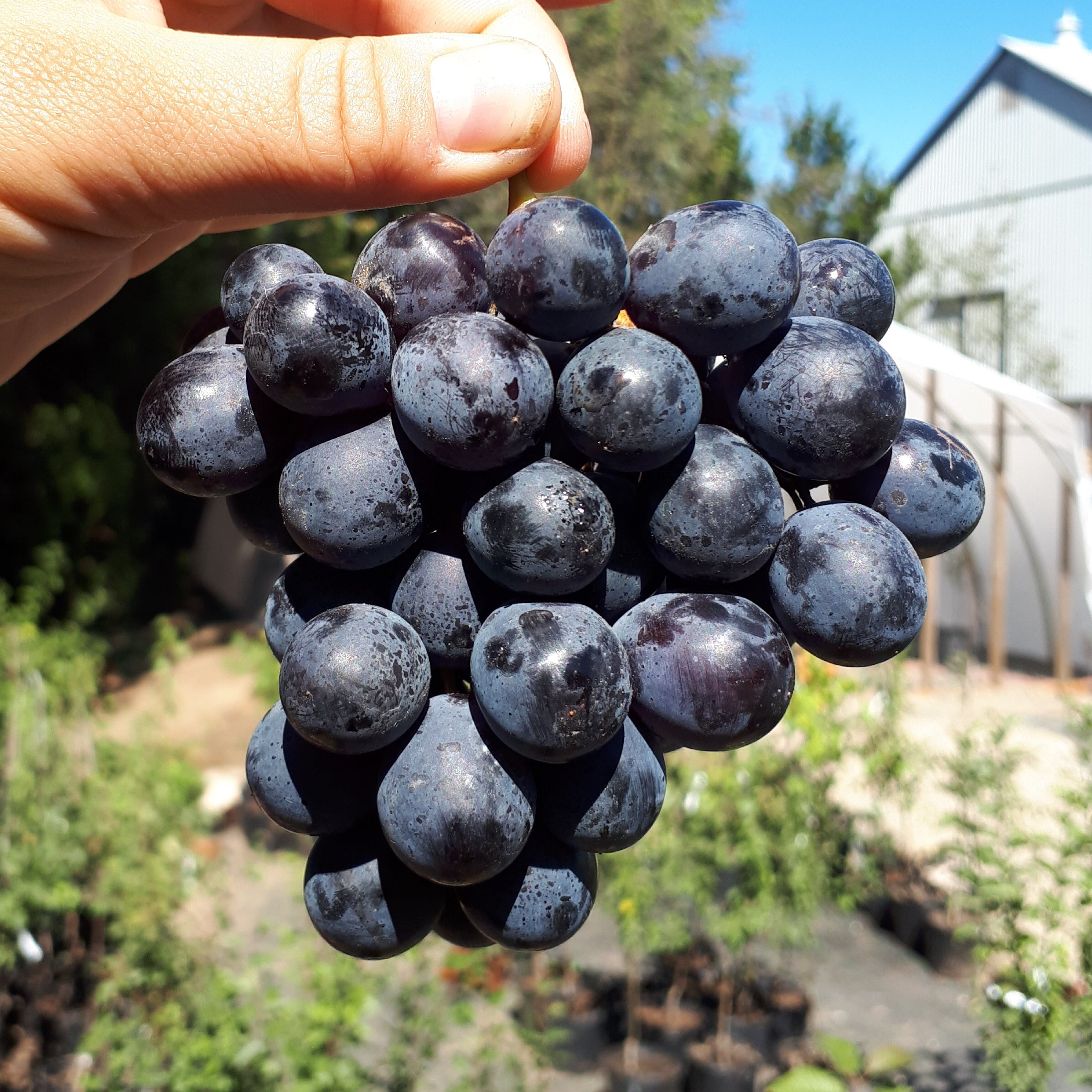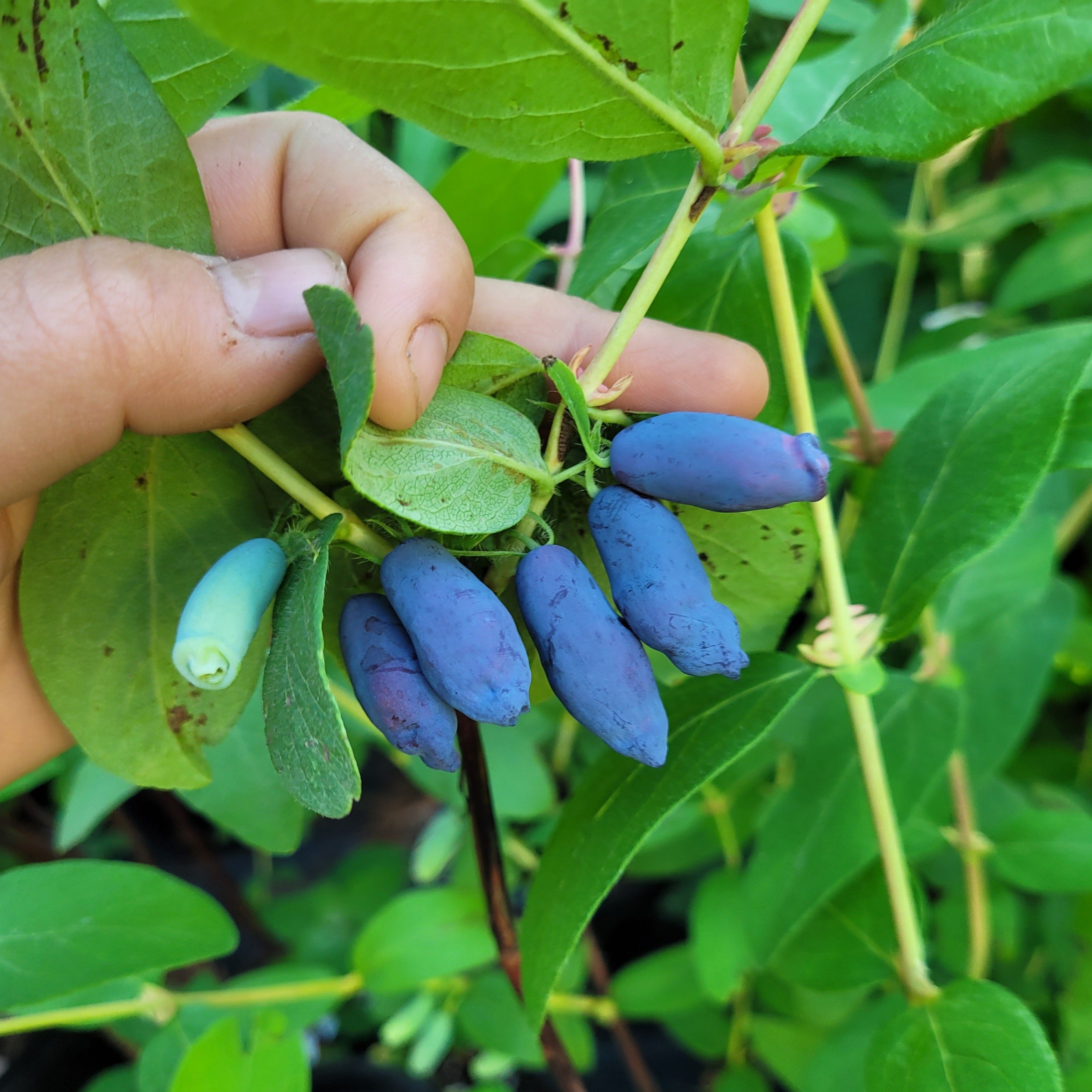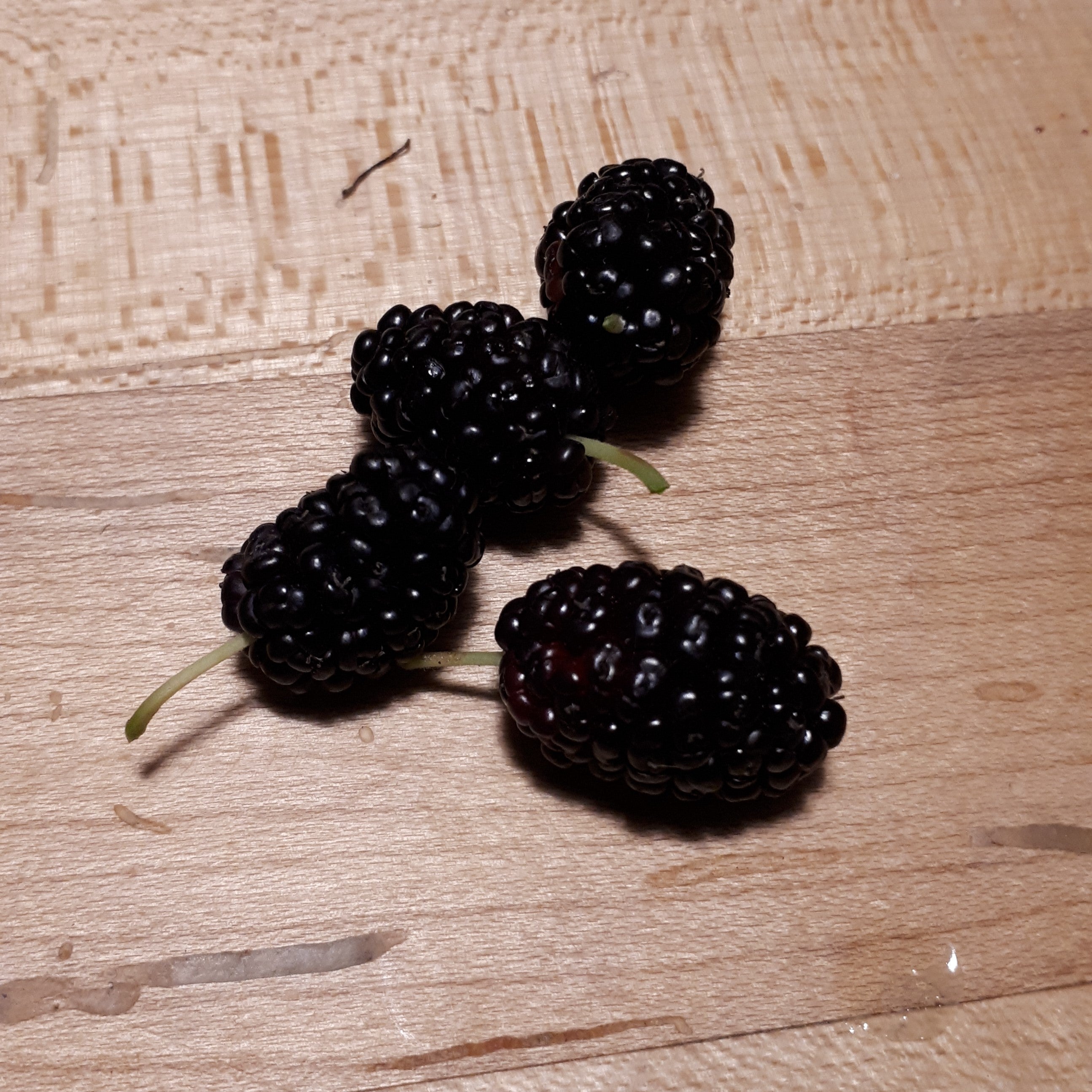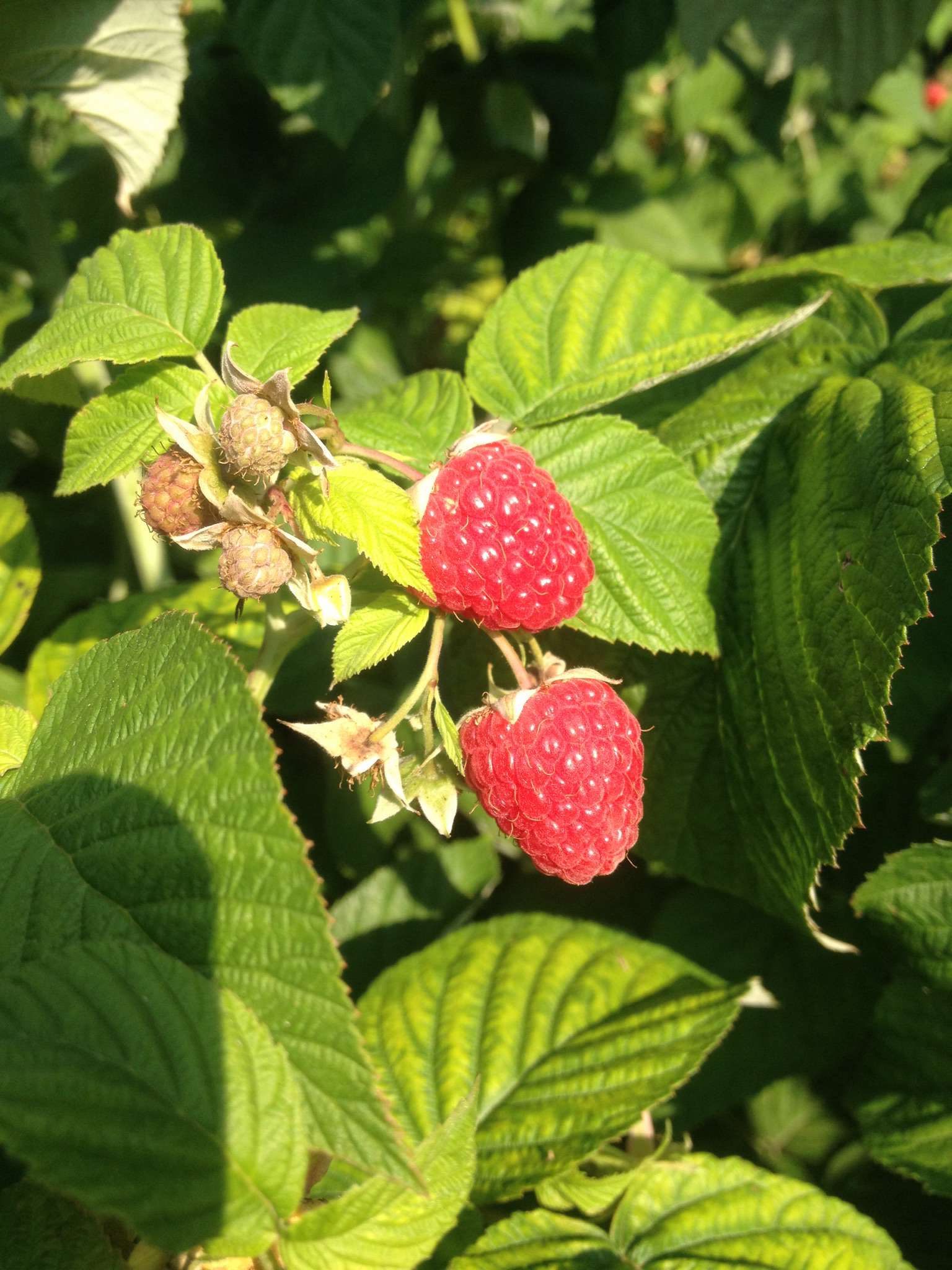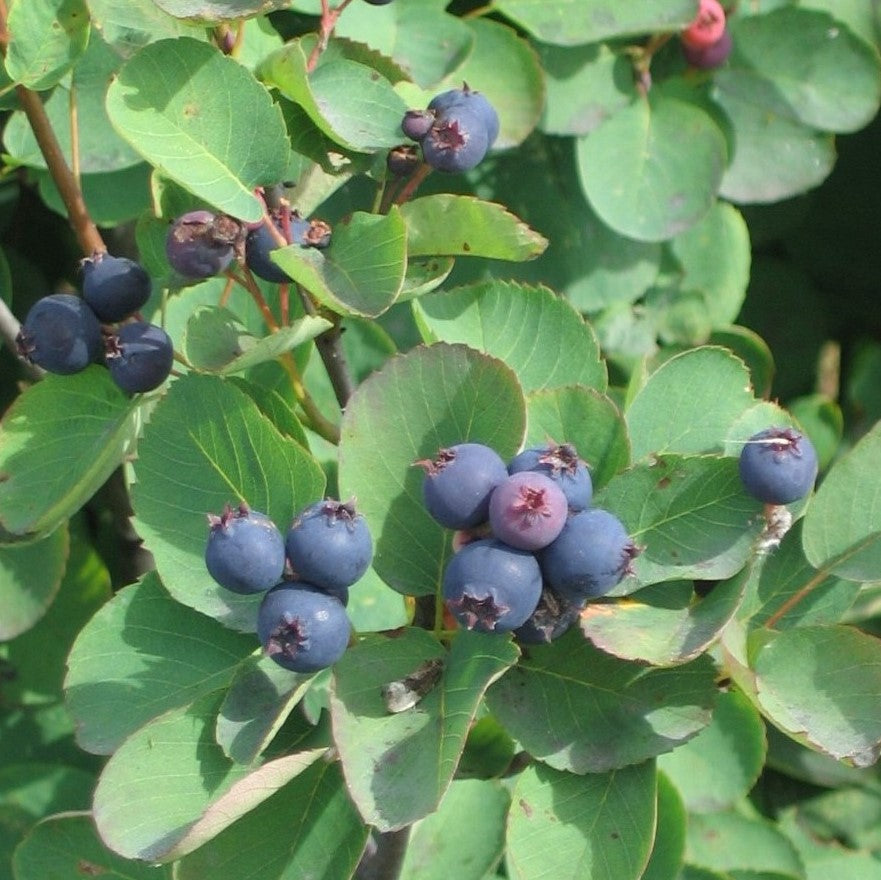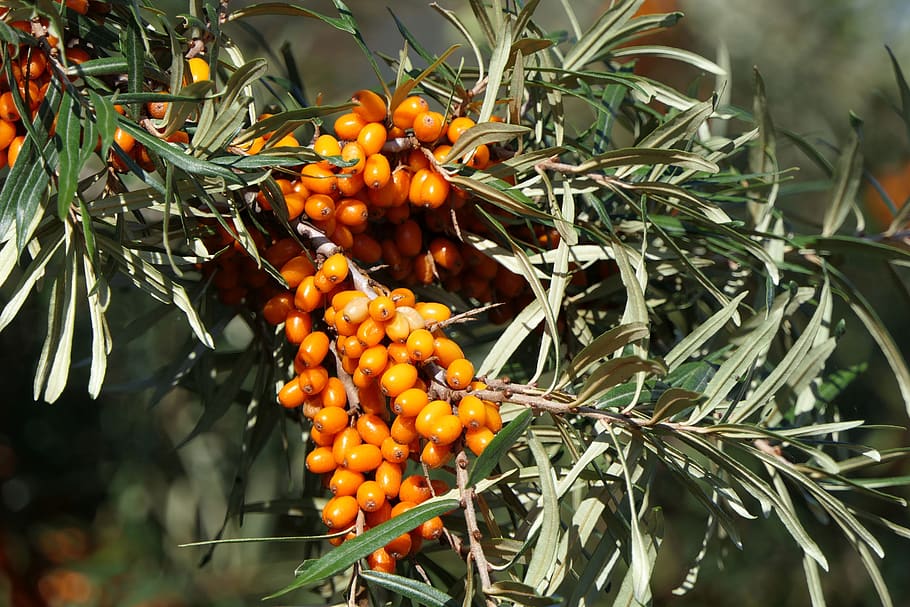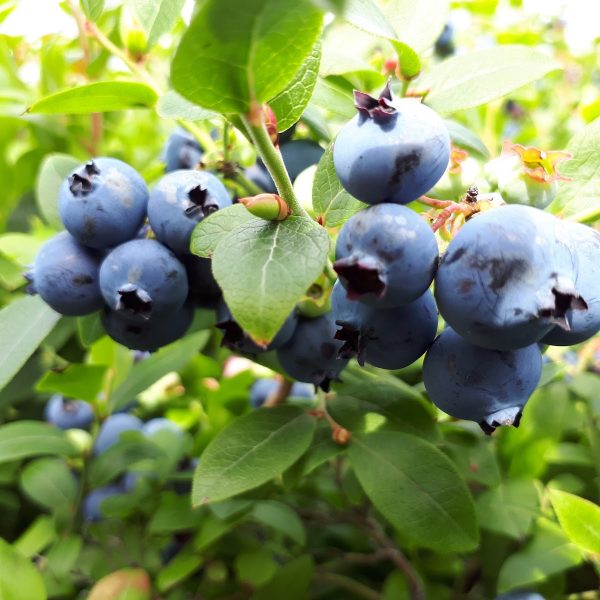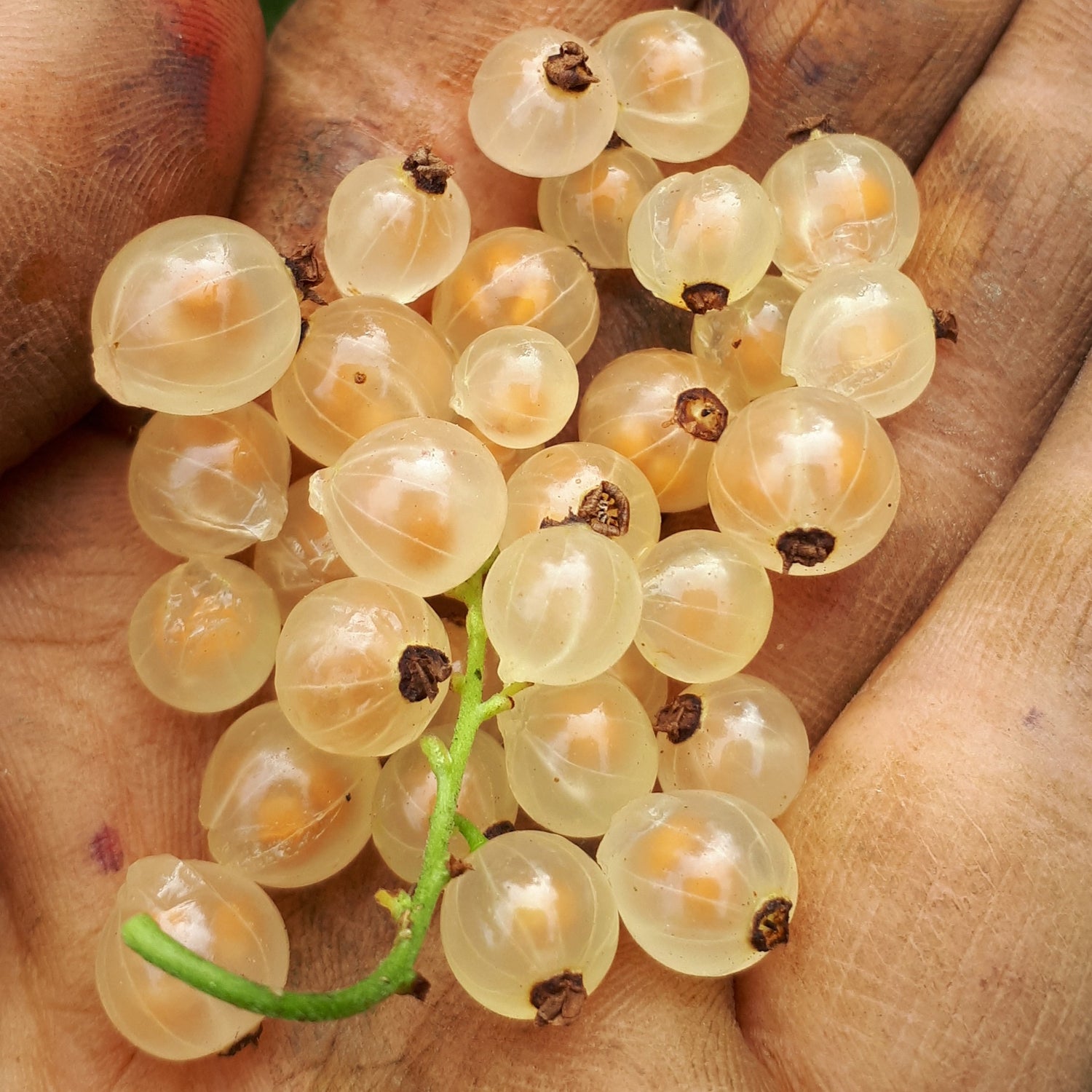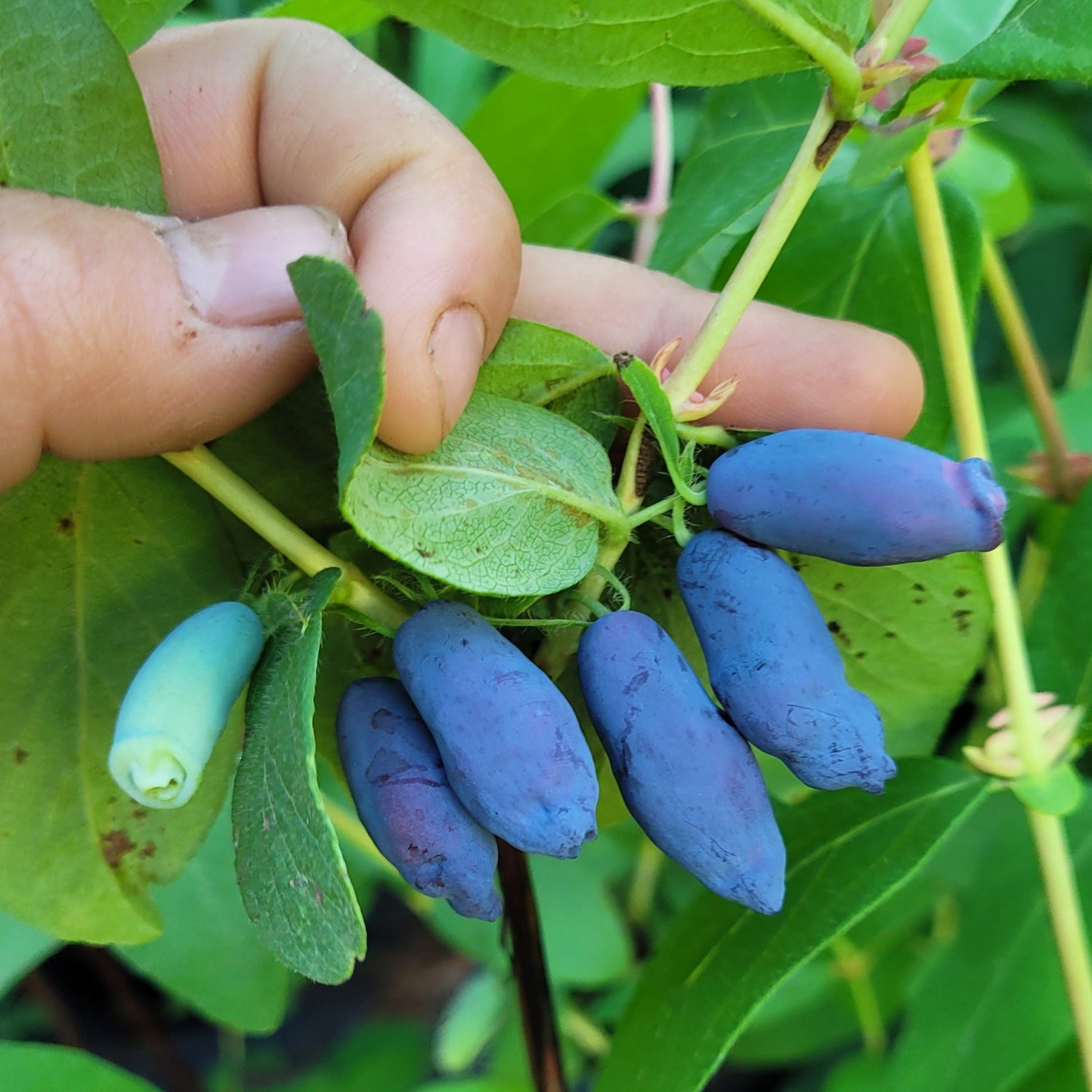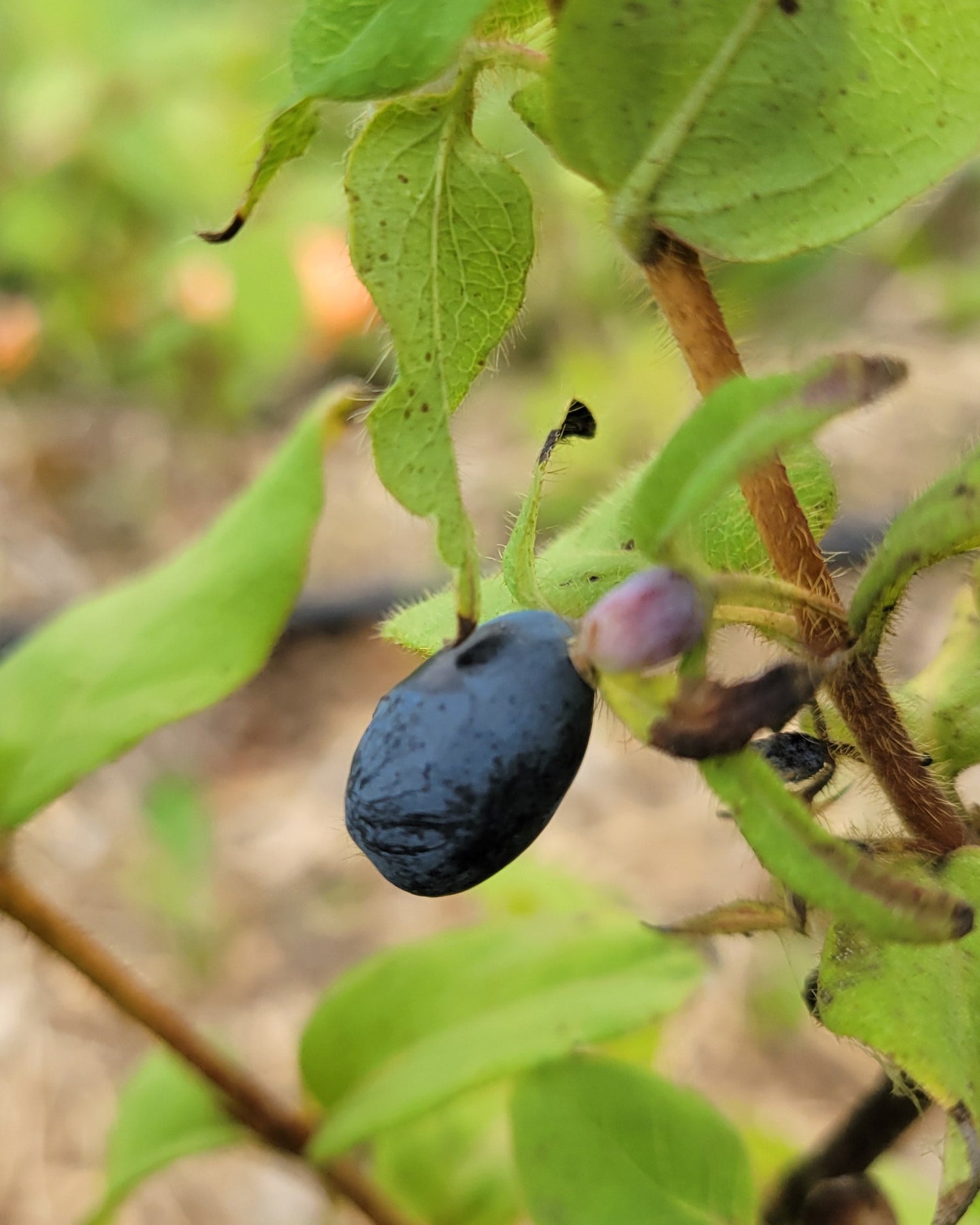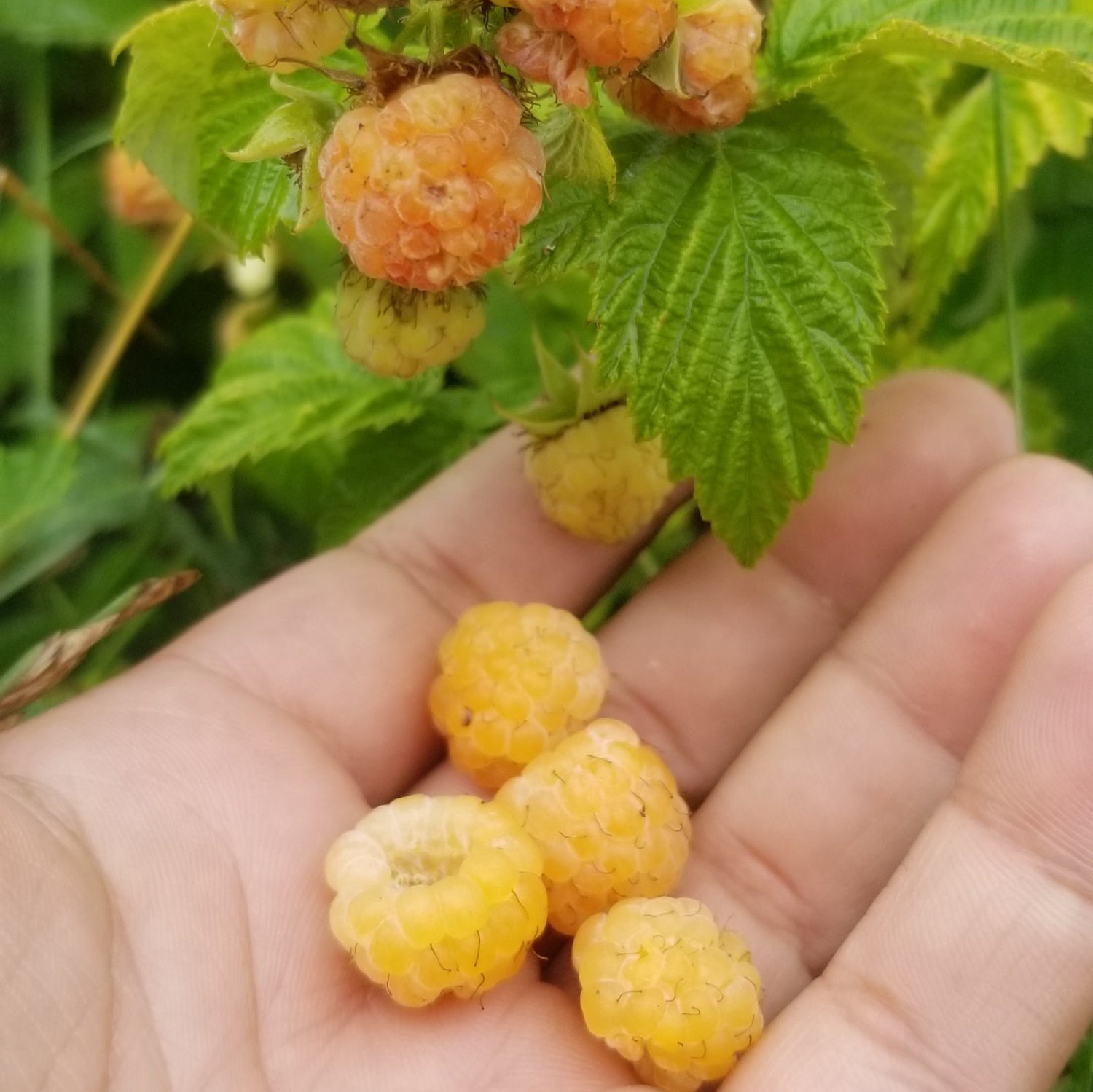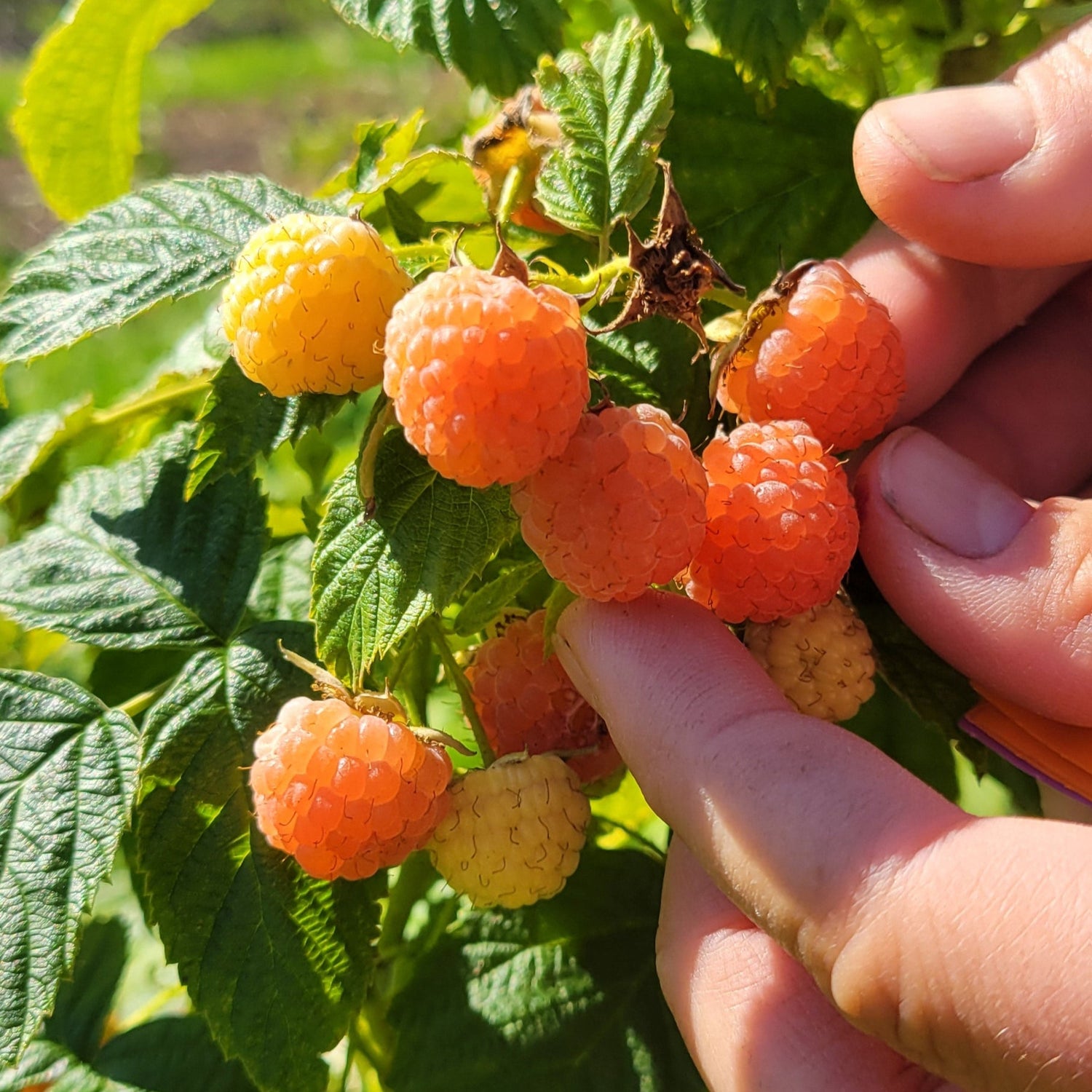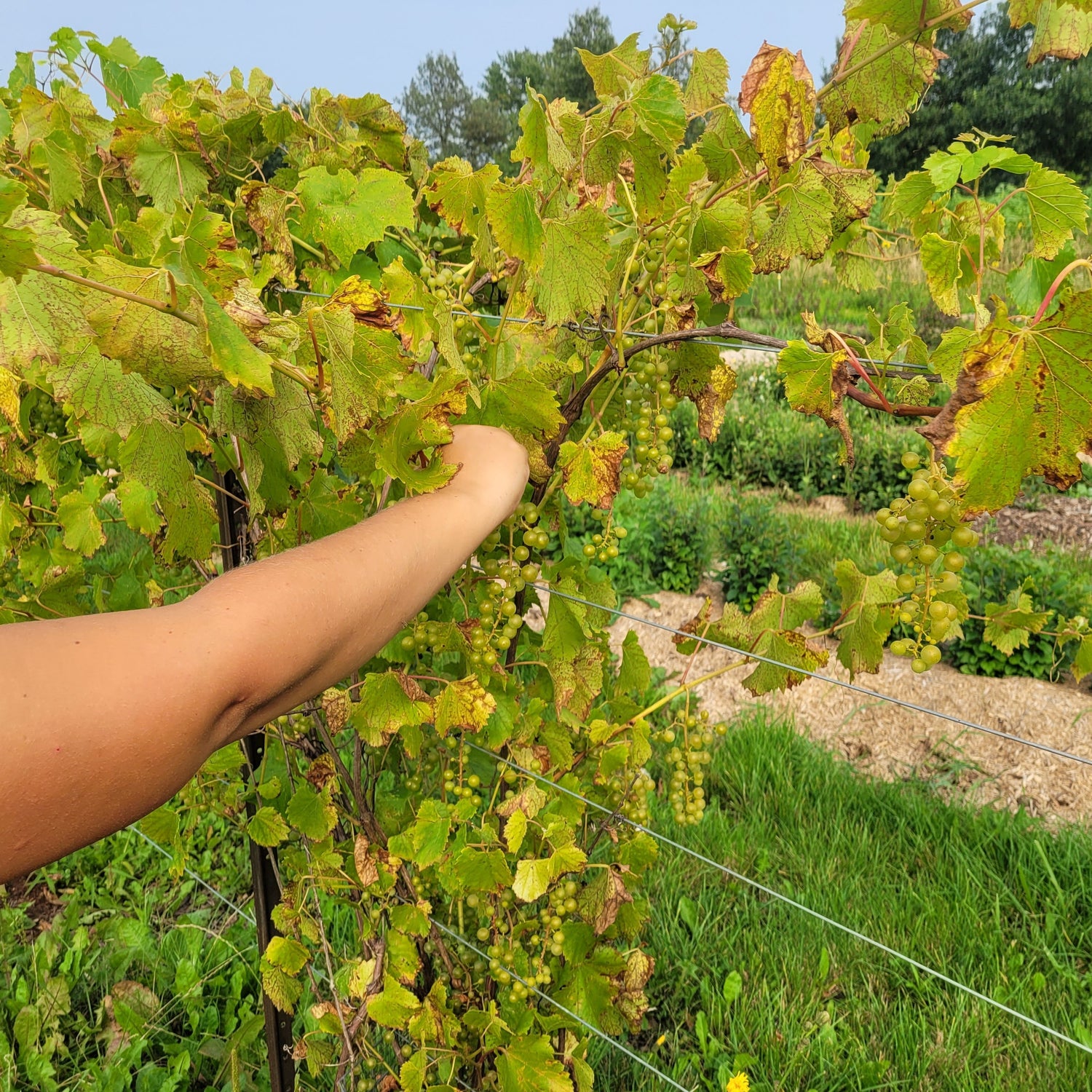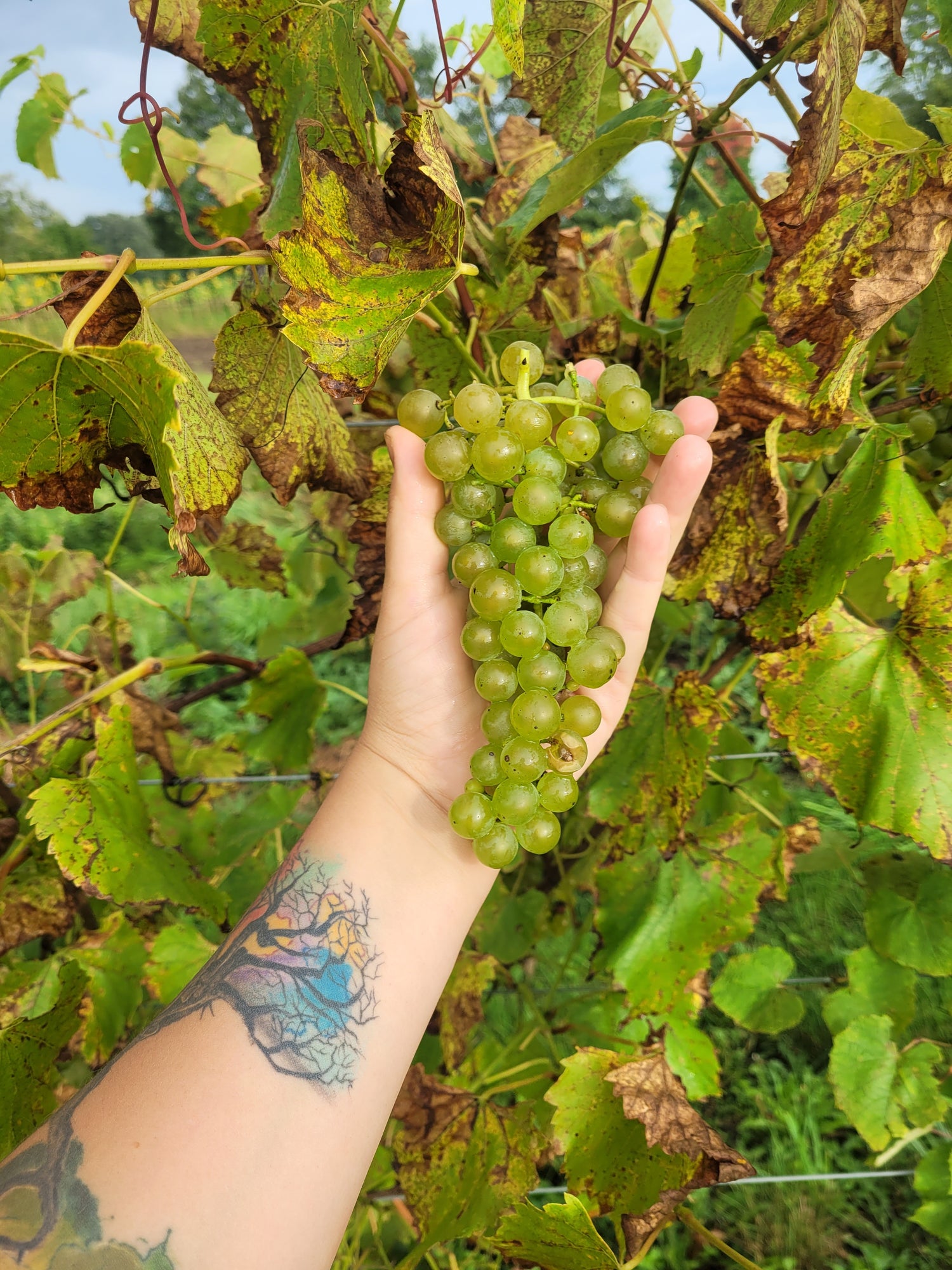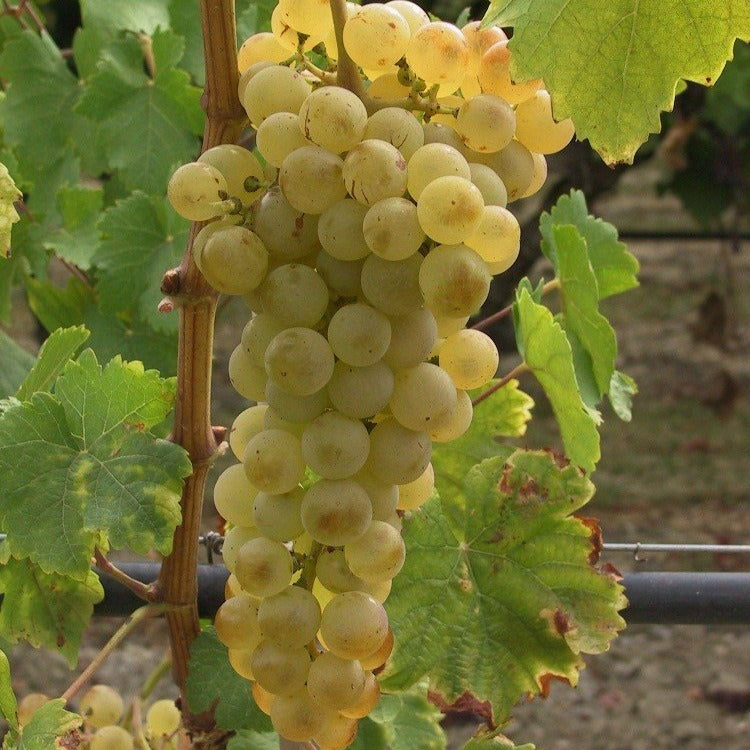Berries and Vines
Berries are a wonderful addition to the orchard, adding depth in many ways: enriching the ecosystem, lengthening the harvest window, bringing more flavours and nutrients into your kitchen. You can't go wrong with adding some of these wonderful options to your landscape (and palate)!
Collections
Sort by:
70 products
70 products
Available only for pick-up at nursery.
Species: Aronia melanocarpa
History: Viking was developed in Finland around the 1980s, likely looking to increase productivity. They succeeded and Viking is now the most productive of all aronia cultivars.
Why We Grow It: With slightly larger than average berries, very good flavour, and the best productivity of all aronia berries, Viking is a hard variety to turn down. Like other aronia berries, they can be a bit tart for fresh eating but are great when used for cooking, baking, wines, jams, etc. While the berries ripen in August, they can hang onto the bush for a couple months and tend to sweeten over time.
Available only for pick-up at nursery.
Species: Sambucus canadensis
History: York was developed at the New York Agricultural Experiment Station in Geneva, New York in 1964. It is a cross between the varieties Adams 2 and Ezyoff.
Why We Grow It: York is known for producing exceptionally large berries that are quite flavourful. This variety is also quite productive, a good choice for fans of these delightful dark purple berries! Eating the raw elderberries can cause adverse reactions so it is recommended that you cook them first!
Available only for pick-up at nursery.
Species: Ribes nigrum x R. ussuriense
History: Consort was bred by Agriculture Canada at the Ottawa Research Station with the goal of creating a variety resistant to White Pine Rust. Researchers crossed black currants (R. nigrum) and Korean black currants (R. ussuriense) in order to create a resistant variety. They succeeded with the hardy Consort which was introduced in 1952.
Why We Grow It: This productive black currant is quite cold hardy and quite resistant to White Pine Rust. The medium-sized dark berries can be used for a variety of uses including jams, preserves, and baking!
Available only for pick-up at nursery.
Species: Vaccinium angustifolium
History: Brunswick lowbush blueberry is the second lowbush variety developed at the AAFC Kentville Research and Development Centre in Nova Scotia. It was discovered growing wild on a blueberry farm owned by Shepoddy Blueberry and Lumber Co. in New Brunswick and was selected in 1965 for further testing. Proving to be an excellent variety that grows well and is relatively disease-resistant, it was named for its province of origin and released in 1977.
Why We Grow It: Brunswick produces firm, medium-sized dark blue berries, bursting with sweet flavour. These lowbush blueberries grow into a compact bush, with glossy dark green foliage that turns a lovely red in autumn. Blueberries are great for baking, for example Steph made some wonderful black currant and blueberry tarts that are pictured here!
Available only for pick-up at nursery.
Species: Ribes rubrum
History: Developed in Holland, White Pearl currants, like all white currants, are actually an albino mutation of red currants. This variety has been popular in Europe for quite some time, although aside from its place of origin it appears there is little information on how it came to be.
Why We Grow It: These delicate translucent berries are white with a pinkish-gold hue, making them delightful to see growing in the garden. They have sweet and mild flavour that is slightly floral. The plant itself is quite cold hardy and bears prolific crops.
Available only for pick-up at nursery.
Species: Lonicera caerulea
History: Indigo Gem was bred by Bob Bors at the University of Saskatchewan as part of the Indigo Series, a series of five varieties that all share the same parents. They were bred sometime in the mid to late 2000s and released around 2010/2011. Indigo Gem is the most productive variety of the series.
Why We Grow It: Indigo Gem produces fairly round berries that are sweeter and smaller than most haskaps, although they still have that characteristic tartness to them! It is considered one of the better options for fresh eating and like other haskaps is also great in baking, making preserves, etc.
Species: Lonicera caerulea
History: Indigo Gem was bred by Bob Bors at the University of Saskatchewan as part of the Indigo Series, a series of five varieties that all share the same parents. They were bred sometime in the mid to late 2000s and released around 2010/2011. Indigo Gem is the most productive variety of the series.
Why We Grow It: Indigo Gem produces fairly round berries that are sweeter and smaller than most haskaps, although they still have that characteristic tartness to them! It is considered one of the better options for fresh eating and like other haskaps is also great in baking, making preserves, etc.
Species: Rubus sp
History: Hardy Black originated in Nova Scotia. As the name implies, the variety was selected for its hardiness along with excellent fruit.
Why We Grow It: This hardy variety produces large, dark berries that are sweet and juicy. To make it even better, they bear fruit over a long period of time which gives you that much more of an opportunity to enjoy these lovely berries.
Species: Rubus sp.
History: Anne is the product of quite the combined efforts between the University of Maryland, Rutgers University, Virginia Polytechnic Institute and State University, Southern Piedmont Agricultural Research and Education Center, and University of Wisconsin. Through their cooperative breeding program, the cross that created Anne was originally made in 1989 and the variety was released in the 1990s. It remains one of the more popular yellow raspberries today.
Why We Grow It: Anne produces large, firm raspberries that are quite sweet with a flavour some liken to apricots or bananas. Most uniquely: the berries are yellow, turning a warm orangey-yellow at their ripest! The berries are good for eating fresh, baking, freezing, or adding to salads and their yellow colour helps them to stand out. This is an everbearing variety so you can cut down the canes in the winter for a large fall crop, or enjoy a more spread out crop from August to September. Anne also sports relatively few thorns, making harvesting a little easier.
These grapes got mixed up and are either Brianna or Osceola Muscat, but you won't know for sure until they bear their delicious fruit! Unfortunately it's too hard to tell the distinct difference with young plants, so we're offering them at a great discount to those who enjoy a little mystery!
Species: Vitis vinifera x V. rupestris x V. ripraria x V. labrusca (Osceola Muscat) OR Vitis riparia x Vitis labrusca (Brianna)
History: Both Osceola Muscat and Brianna grapes were bred by renowned grape breeder Elmer Swenson in an effort to develop grapes that grow well in cooler climates.
Why We Grow It: Both of these grape varieties are seeded green grapes. Osceola Muscat produces loose clusters of seeded, intensely aromatic grapes with notes of peach and apricot. Meanwhile, Brianna boasts excellent complex fruity flavour that has hints of grapefruit and pineapple. Both varieties are relatively vigorous and hardy, and you can't go wrong with either one!
